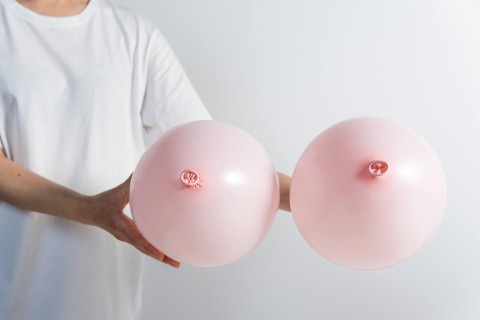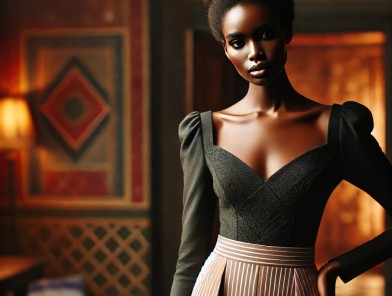Why Male Eyes Lock on Nipples
From an evolutionary standpoint, the female breast and, in particular, the nipple has long served as a signal of fertility and sexual maturity. When a man sees a nipple, it triggers neurological and hormonal pathways that are deeply rooted in human evolution. Studies suggest that nipples act as a visual cue for reproductive readiness, prompting a cascade of arousal in the male brain. It’s not simply physical attraction; it’s a coded signal, a form of primal communication that transcends words. This may explain why, for many men, catching sight of a nipple can produce a near-instantaneous arousal response.
Psychologically, the nipple is often fetishized because it represents intimacy and sensuality in miniature. The brain associates the nipple with erogenous stimulation, caregiving, and erotic touch, making it both a tender and sexually charged zone. For men, this combination of nurturing symbolism and sexual provocation can create a compelling neurological “lock,” drawing attention involuntarily and intensifying arousal.
What Men See in a Nipple
Men perceive nipples through a complex blend of visual and psychological signals. Beyond their shape, color, or size, a nipple conveys femininity, sensitivity, and availability. The nipple becomes a focus point, almost a visual shorthand for sexual pleasure and erotic potential. Some researchers argue that the male response is partially learned through cultural cues, media representation, and personal experience, layering modern sexuality onto ancient evolutionary instincts.
This visual fascination is not limited to direct sexual desire; it also signals intimacy. A man may find himself captivated by a nipple even outside sexual contexts because it symbolizes trust and closeness, linking erotic interest with emotional connection.
Nipples as an Erogenous Zone
For women, the nipple is one of the most sensitive parts of the body. Rich in nerve endings, it can trigger intense pleasure when stimulated. Many women report that gentle touch, licking, or sucking of the nipple produces a unique arousal that is distinct from genital stimulation. This dual role of the nipple both sensual and reproductive underscores why it is so sexually charged. It also explains why men are instinctively drawn to it: the nipple is a mirror of pleasure, a place where the female body communicates desire and responsiveness.
The erogenous potential of nipples varies from woman to woman, influenced by hormonal cycles, sensitivity, and personal preference. Some women view nipple play as a central part of sexual intimacy, while others may enjoy it sparingly. Regardless, the nipple functions as a gateway to erotic engagement, bridging visual, tactile, and emotional stimulation.
Women’s Relationship with Their Nipples
Women’s relationships with their own nipples are complex and deeply personal. Some see them as purely functional, especially in breastfeeding, while others embrace them as symbols of sexuality and empowerment. The aesthetic and sensual qualities of nipples influence how women perceive their own bodies and express intimacy with partners. In many cases, nipple stimulation enhances sexual confidence, intimacy, and mutual pleasure, making the nipple both a personal and shared erotic instrument.
Nipples can also carry cultural and social weight. In certain societies, they are sexualized and censored, while in others, they are celebrated in art, fashion, and sexual expression. Women’s attitudes toward their nipples are thus shaped not only by biology and pleasure but also by social perception, personal experience, and empowerment narratives.
Types of Nipples and Their Roles
Nipples are far from uniform. They vary in size, shape, color, and protrusion, and each variation carries its own aesthetic and sensual appeal. Some are flat or slightly inverted, while others are prominent and highly sensitive. The color can range from pale pink to deep brown, and the areola the circular area surrounding the nipple adds its own texture and visual impact.
The areola serves multiple purposes: it enhances the visual contrast of the nipple, making it easier to locate for breastfeeding, and it contributes to erotic allure. Pigmentation and texture can vary with hormonal changes, sexual arousal, and age, subtly signaling fertility and vitality. For many men, the combination of nipple and areola presents a focal point of sensual intrigue, acting as both a visual stimulus and a guide to touch.
The Nipple in Sexual Dynamics
In sexual activity, the nipple functions as both a source of pleasure and a point of erotic communication. Its stimulation releases oxytocin, heightening intimacy, and reinforcing emotional connection. This chemical response may explain why nipple play often intensifies overall sexual experience for both partners.
Nipples also serve a symbolic function. They represent attention to detail, mutual exploration, and care in sexual intimacy. The act of focusing on a nipple can express desire, admiration, and respect, transforming a small part of the body into a profound channel for erotic and emotional exchange.
The Cultural and Erotic Significance
Throughout history, nipples have carried layered meanings. In art, literature, and media, they are often coded as both forbidden and desirable, symbolizing sexuality, power, and allure. The male fascination with nipples is reflected not only in sexual behavior but in broader cultural practices fashion, photography, and erotic media all highlight their visual and sensual importance.
This cultural attention amplifies the innate biological response, creating a feedback loop: men are drawn to nipples because of biology, but culture intensifies awareness and desire. Women, in turn, navigate this attention in ways that can enhance confidence, pleasure, and erotic self-expression.
The power of nipples
The male attraction to female nipples is a complex interplay of evolution, psychology, and culture. From an evolutionary perspective, nipples signal fertility and reproductive readiness. Psychologically, they are erogenous zones rich in sensory stimulation. Culturally, they are symbols of intimacy, sensuality, and erotic intrigue.
For women, nipples serve as points of pleasure, aesthetic pride, and sexual empowerment. The variety in nipple types and the role of the areola adds depth to their visual and tactile appeal. In sexual dynamics, nipple stimulation enhances arousal, intimacy, and emotional connection, making them central to both erotic and relational experience.
Ultimately, the nipple is more than a body part; it is a nexus of biology, desire, and cultural meaning, capable of sparking fascination, pleasure, and connection in ways that are both primal and profoundly human.













